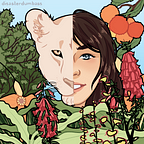Science Stories | Animal behaviours
The ‘behaviour-changing parasite’ in your housecat can also mess with hyaena cubs
While cubs were less likely to get infected, those that did get infected showed dangerous behaviours
Toxoplasma gondii is one of the most famous parasites to inhabit the collective imagination; its coolness factor is only a notch or two below the infamous “ant zombie” cordyceps.
It is also a prevalent parasite that literally inhabits our bodies. Infection rates vary widely by region, from around 11% in the United States to 55% in Germany, although even higher rates have been reported in other countries.
Globally, the percentage of people who have at some point contracted toxoplasmosis but do not display outward symptoms is estimated to be higher than 30 % in humans. In felines, the percentage was estimated to be 35% in domestic cats and 59% in wild felids, with significant differences throughout the world.
If you have not heard about toxoplasmosis before, check out this fun, short explainer about it:
Toxoplasma gondii is very well researched. However, a lot of what we know about the parasite comes from experiments in the lab. Until now, there hadn’t been many studies investigating toxoplasmosis and the effects it may have in the wild.
A recent study in Nature Communications changes this, as highlighted by the lead researcher Eben Gering at Nova Southeastern University:
One factor that sets this study apart from the vast majority of prior research is that we were able to test predictions about the parasite’s effects within the natural settings in which they purportedly evolved.
The study spanned 30 years, and it involved collecting behavioural observations and blood samples in the African savannah. Specifically, data was collected in the Masai Mara National Reserve, where lions and hyaenas co-exist in an uneasy balance. Toxoplasma is the invisible third-wheel, hoping for conflict between the two species. This is because toxoplasmosis can only reproduce inside of felines, like lions, but can survive in many other species, hyaenas and humans included.
Their findings are not great for young hyaenas. Hyaena cubs infected with toxoplasmosis get closer to lions than non-infected cubs, a very dangerous thing, as lions will take the opportunity to kill hyaena cubs if they can.
In fact, the most likely cause of death for a hyaena changes dramatically depending on whether or not they became infected with toxoplasmosis as a cub.
Hyaenas who were infected as cubs and died had 100% of their deaths attributed to lions. However, hyaenas that were not infected as cubs only had 17% of their deaths attributed to lions.
The fact that older hyaenas are at a reduced risk from lions suggests that their earlier experience dealing with lions can help them effectively assess dangerous situations and avoid giving in to the risky behaviour induced by the toxoplasma parasite.
Zachary Laubach, the co-lead researcher in this study, pointed out that there is much more to be learnt:
One limitation of this work is that it was an observational study. But limitations are interesting, because it points to what one might do next. We’d like to go back and tease apart how behaviors change in individuals by comparing how their behaviors differ before versus after infection.
